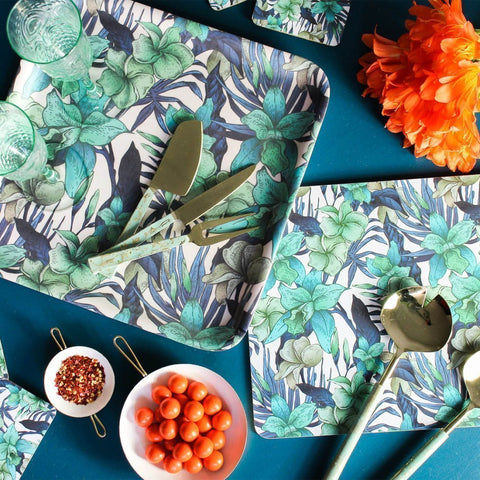When it comes to decorating your living space, choosing the right colours can be a daunting task. Not only do you want to create a cohesive and visually pleasing aesthetic, but you also want to ensure that the colours you choose reflect your personal style and create the desired mood in the room. Accent colours, in particular, play a critical role in tying a room together and adding character and interest to a space. In this blog post, we will explore how to choose the right accent colours for your living space.

Understanding the Colour Wheel
Before diving into selecting accent colours, it's essential to have a basic understanding of the colour wheel. The colour wheel is a visual representation of the primary, secondary, and tertiary colours and how they relate to one another. Primary colours (red, blue, and yellow) are the foundation of all other colours, while secondary colours (orange, green, and purple) are created by mixing primary colours. Tertiary colours (red-orange, blue-green, etc.) are created by mixing primary and secondary colours.

Complementary Colours
One of the most straightforward ways to choose accent colours is to select colours that are opposite or complementary to the primary colour scheme of the room. These colours will create a striking contrast and add visual interest to the space. For example, if your walls are a neutral beige, you could choose a deep navy blue as an accent colour. Alternatively, if your walls are a cool gray, you could choose a warm orange as an accent colour.

Analogous Colours
Another option for choosing accent colours is to select colours that are adjacent or analogous to the primary colour scheme of the room. These colours will create a cohesive and harmonious look and feel. For example, if your walls are a pale blue, you could choose a pale green and a pale purple as accent colours. Analogous colours can also be used to create a gradual transition between spaces in an open floor plan.

Monochromatic Colours
If you prefer a more subdued and sophisticated look, you may choose to use a monochromatic colour scheme for your accent colours. A monochromatic colour scheme uses different shades, tints, and tones of a single colour to create depth and interest. For example, if your walls are a light grey, you could choose a darker grey as an accent colour and use various shades of grey throughout the room, such as a pale grey throw pillow or a dark grey piece of artwork.
Personal Style
Ultimately, the most important factor in choosing accent colours is to select colours that reflect your personal style and create the desired mood in the room. If you prefer a bold and vibrant look, you may choose to use bright and saturated colours as accents. If you prefer a calm and serene look, you may choose to use pale and muted colours as accents. It is essential to consider the overall design aesthetic of the room and how the accent colours will complement and enhance it.
In conclusion, choosing the right accent colours for your living space can be a fun and creative process. By understanding the colour wheel and considering complementary, analogous, and monochromatic colour schemes, you can create a visually pleasing and cohesive aesthetic in your space. And most importantly, selecting colours that reflect your personal style and create the desired mood in the room. With a little bit of planning and experimentation, you can create a living space that is not only beautiful but also functional and reflective of your personal taste.

